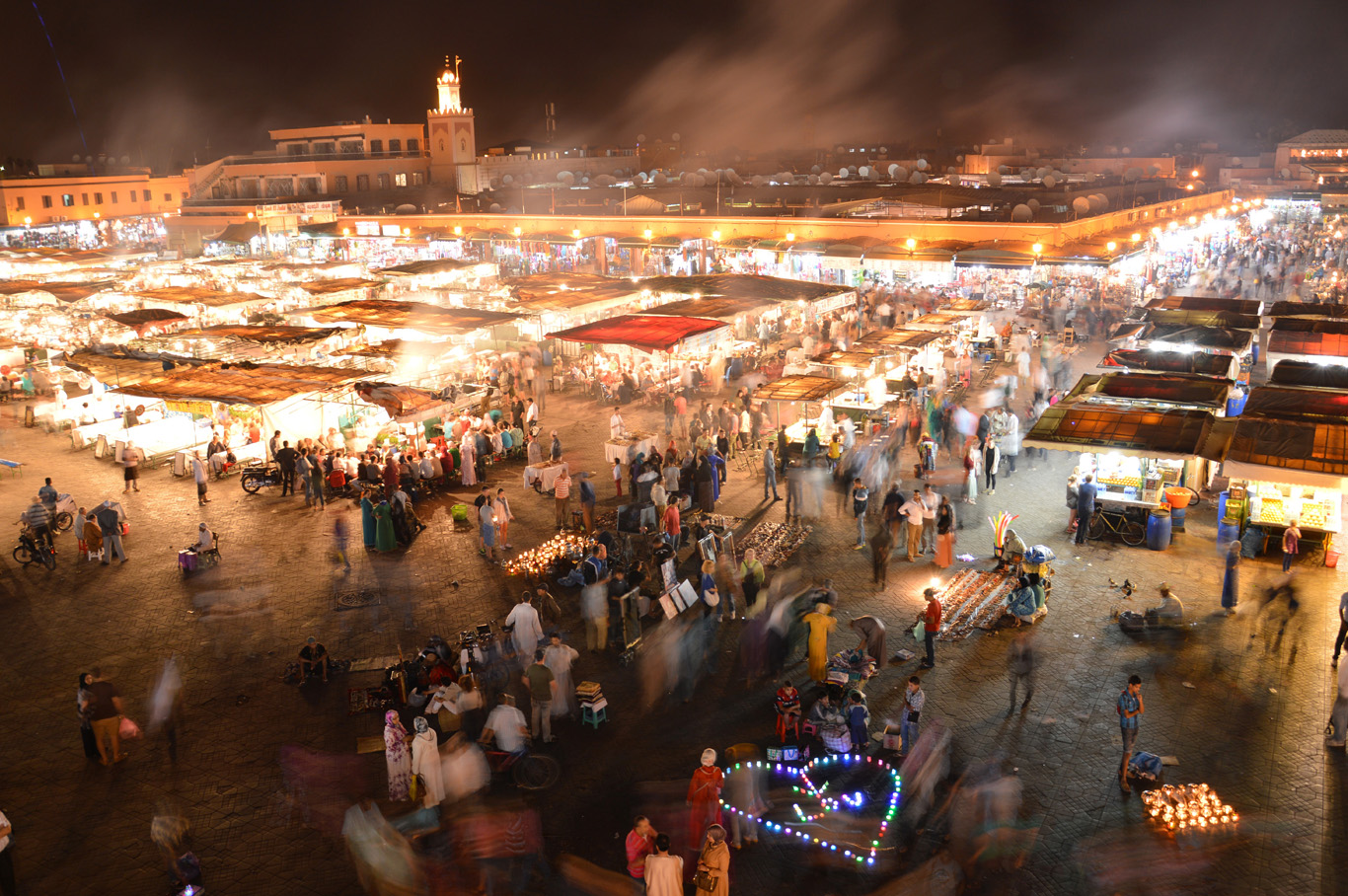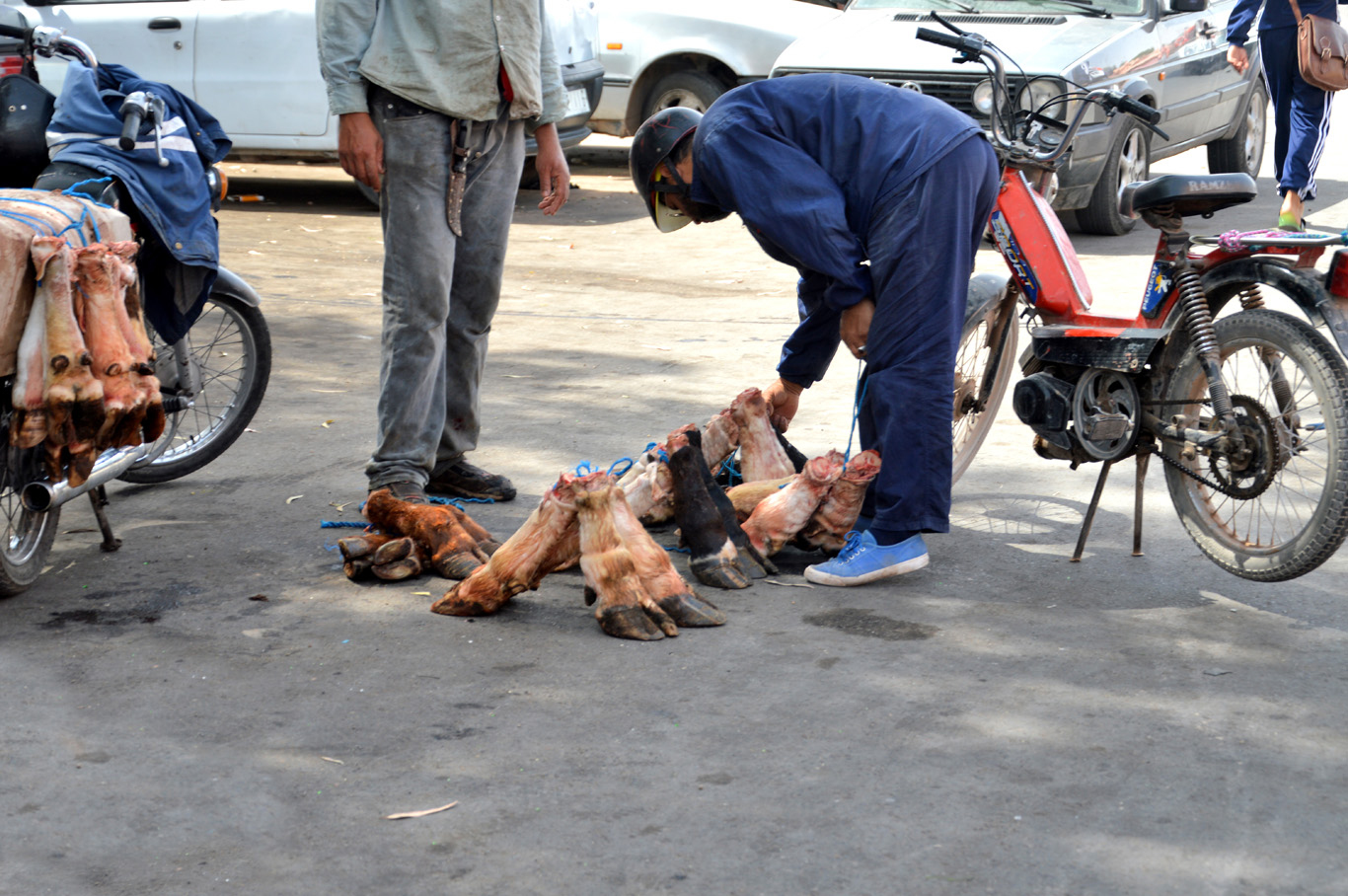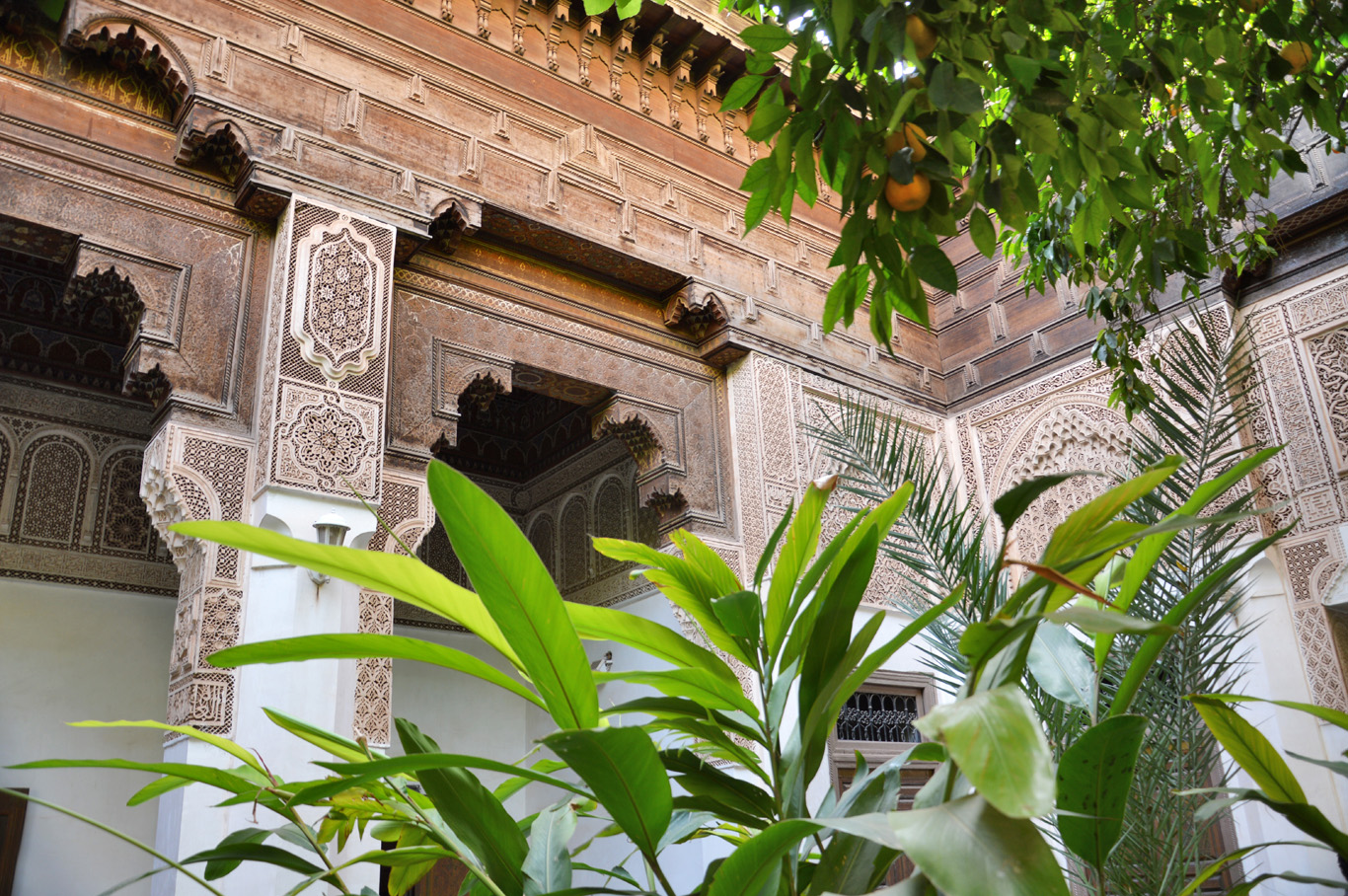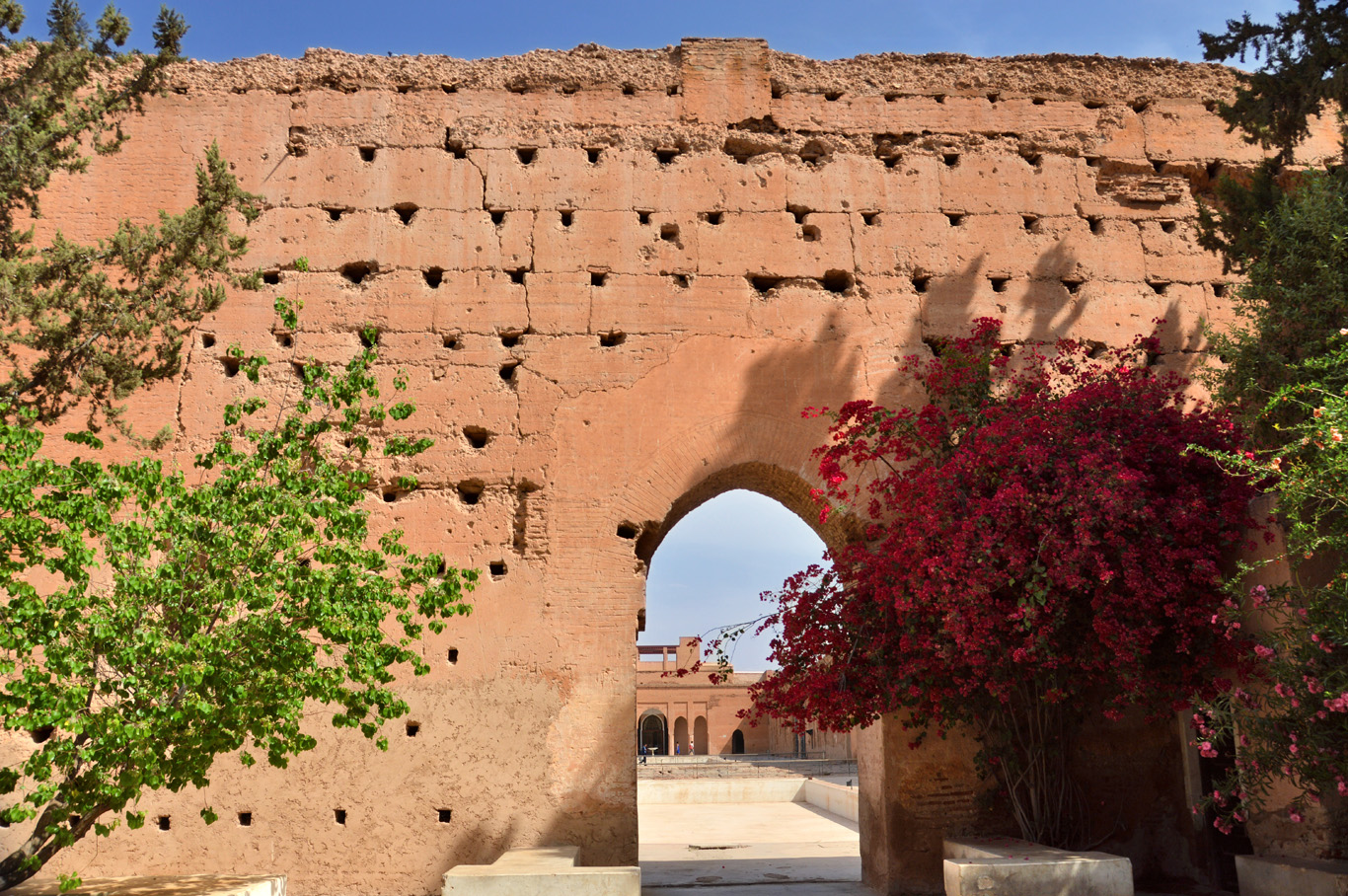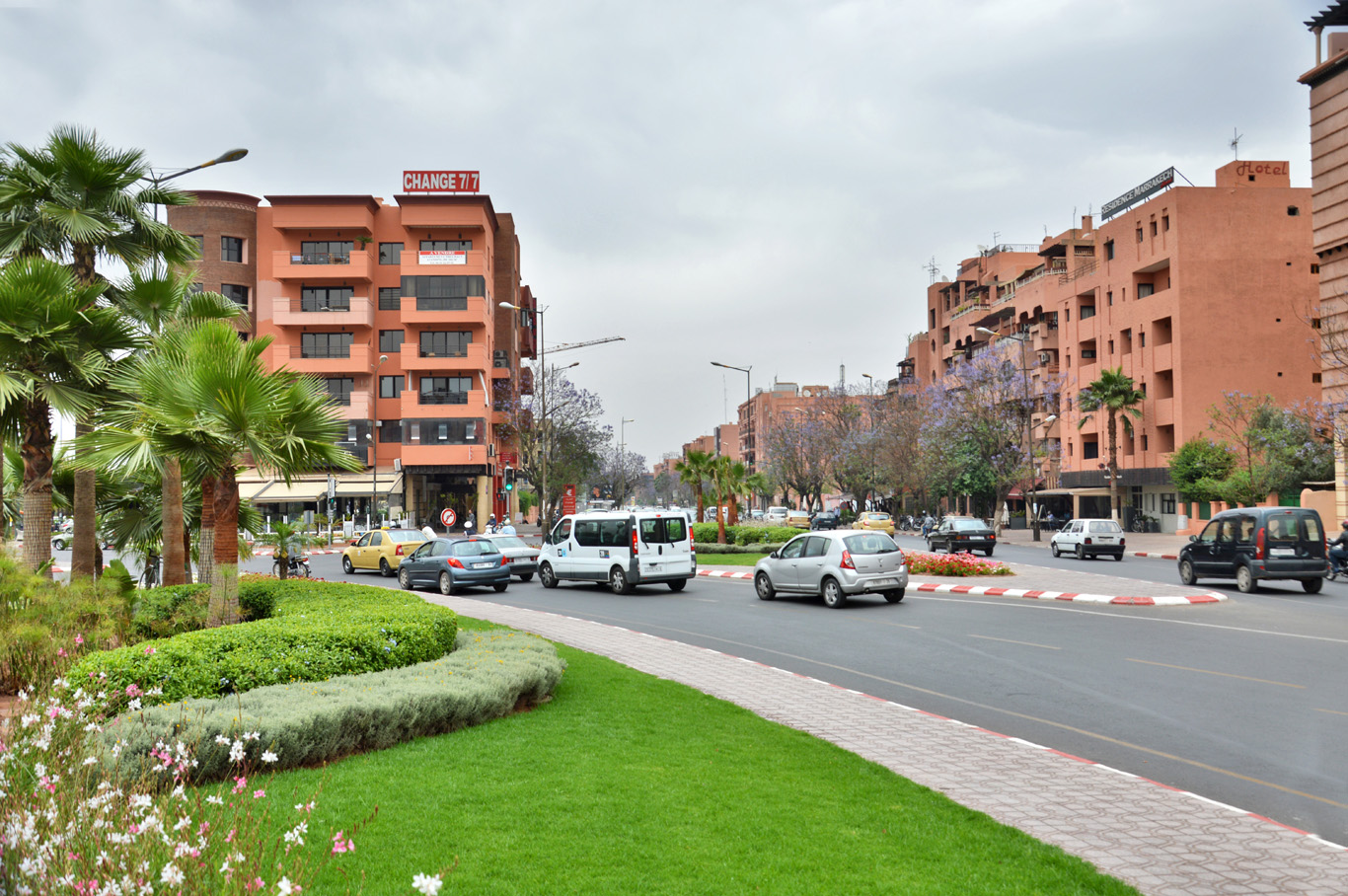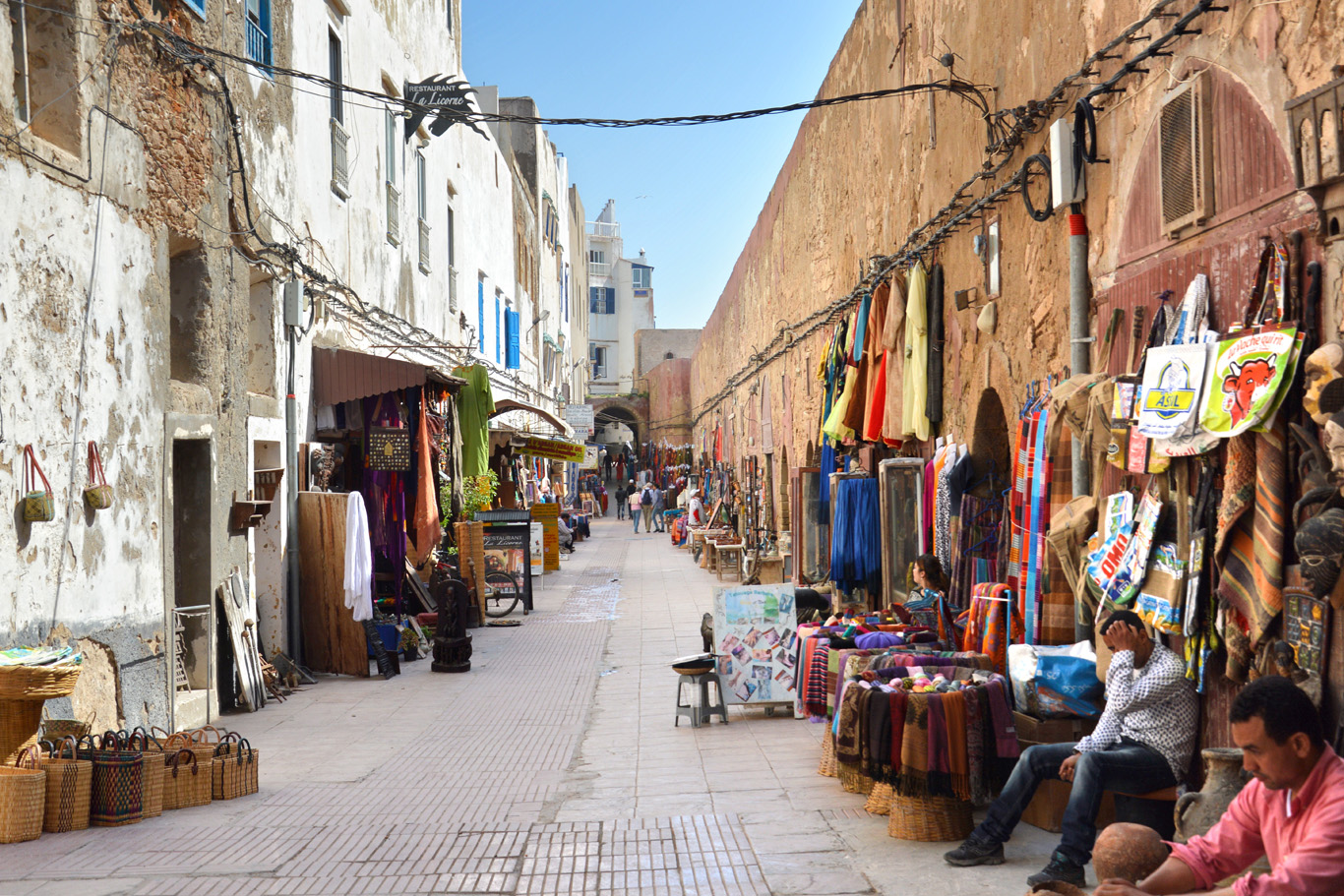The city of Marrakesh is often the first contact with Morocco for many. Thanks to the budget airlines that offer numerous connections with Europe, the gate to this exciting, exotic country has been open and Morocco is constantly gaining in popularity. Marrakesh - with its old markets along the tiny, winding streets in Medina, unique architecture and numerous palaces is a good starting point to begin your adventure in Morocco. Although, due to the culture shock (see below), Marrakesh wasn't my favorite city in the country (Fez, Essaouira and Chefchaouen turned out to be better) - it's still well worth a visit - you'll have a chance to see how diverse and chaotically beautiful Morocco is.
Marrakesh - first impressions and culture shock
Marrakesh is located merely a few hour flight away from European capitals and after such a short trip, although you know it's Africa, you are somehow still surprised by how different it is. At first, during your ride from the airport to the city - you might feel everything is same as anywhere else.
But inside the Medina - you enter a completely different world. The streets look like as if they were taken directly from the Middle Ages. They are dark, chaotic and a bit dirty. It does feel like a labyrinth and it's extremely easy to get lost as every corner and every building seem to look just like the other. In some parts, the streets can even be a bit dodgy and for someone who is in such a place for the first time - this may come as a huge shock - the photos from beautiful, cozy, oriental Morocco seen online clash here with the unpolished reality. But this wasn't exactly what shocked us. We were used to places of this sort in other continents. What shocked us, was the quite number of dishonest people that try to trick tourists and can be sometimes intimidating. If anyone approaches you in a street, best thing to do is to ignore and keep walking. If you're wondering if it's safe to visit Morocco and Marrakesh - I wrote a post about our experience with con artists there and how to avoid them.
What to See in Marrakesh
Marrakesh is also called the "red city" (as opposed to Chefchaouen - blue city) as most of its buildings - both old traditional and brand new, have a reddish or pinkish hue. This gives a distinctive feature to Marrakesh and the red streets in Medina as well as mosque towers are the main landmarks of the city. The Medina and its surroundings are the most popular areas that everyone should see. Apart from that, there are a few interesting places further away from the city center for those who love to get off the beaten path. I marked the spots we visited on the map screenshot below:
1. Medina, 2. Jemaa el-Fnaa square, 3. Koutoubia Mosque, 4. Bahia Palace, 5. El Badii Palace, 6. Moulay El yazid Mosque, 7. Saadian Tombs, 8. Tanneries, 9. Majorelle Garden, 10. Menara Gardens
Medina - The Old City in Marrakesh
Medina (number 1 on the map) is the equivalent to "Old Town" in European cities. It's basically a maze of winding, tiny streets filled with shops and old style apartments. If you don't mind the ubiquitous chaos, mess and noise - it's a good place to stay - you will be close to most of the attractions around. Remember that no cars are allowed in Medina - taxis stop outside the main gate. But beware of motorcycles. They can appear out of nowhere and the drivers don't seem to care much about the passerby. Here, in the souks (street stalls and markets), you can buy many herbs, spices and souvenirs. You must know how to bargain though, as the sellers can be pushy and intimidating. All the attractions described below (until the Modern Marrakesh part) are within a walkable distance from one another:
Jemaa el-Fnaa Square
The Jemaa el-Fnaa square (number 2 on the map) is the most popular market square in the continent of Africa. Situated in Medina, its wide, open space contrasts with the narrow, maze-like streets around. You can find so many various food and other goods stalls here that it's overwhelming. The square is especially beautiful after dark - you can take amazing photos of it from one of the surrounding cafes - like the one on the cover of this article that I took at night. If you wish to buy something - bargain and be careful about what food or drink you're getting. We bought some orange juice - and although amazingly tasty and so cheap - it gave stomach problems to a few of our companions. The restaurants around the square are absolutely stunning and the food, although aimed at tourist is safe and decent enough. But the real treat - amazing local dishes - we had during our crazy 800 km ride in a local taxi through the country - take a look at my post about it!
Koutoubia Mosque
Koutoubia Mosque with its beautiful tower is one of the landmarks of Marrakech. It's the largest mosque in the city and also has beautiful gardens at the backside. The tower is carefully decorated and it doesn't look like a typical minaret. The mosque dates back to the 12th century and is definitely one of the most impressive in Morocco. As it is illuminated at night, it's perfect for a visit after you had dinner in the Jemaa el-Fnaa square.
Palaces and Tombs
Marrakech is full of beautiful palaces. Within the old city area, you can see Bahia Palace (number 4 on the map) and El Badii Palace (number 5 on the map). The Bahia Palace dates back to the 19th century and was meant to be one of the greatest of its times - the name itself means "brilliance". It's located only a 15 minute walk from the Jemaa El-Fnaa square - so don't fall for anyone trying to offer you a ride there. The building is beautiful, renovated and very well maintained. It mixes both Moroccan and Islamic architectures. Although it is impressive, I wouldn't say that it was the best palace we've ever seen. Within the complex, you can also admire the gardens. The entry fee is only around 1 USD for both the palace and gardens so I would definitely recommend a visit there.
El Badii palace, located just beside, is completely different from the perfectly kept Bahia. It is a ruined complex of a huge area of gardens and royal buildings that date back to the 16th century. Even today, you can still imagine what the palace was like in its original glory. The mosaics and columns are so impressive and the sheer size gives away a hint of how great the original structure was. Surprisingly, the palace was not destroyed by any wars or invasions - it was stripped of the building materials and decorations by the emperor Ismail Ibn Sharif as he moved the royal residence to another capital. The entry fee of around 2 USD is very affordable.
On the way to another royal site - Saadian Tombs (number 7 on the map), take a short stop at the Moulay El yazid Mosque (number 6 on the map) which is located right next to it. The mosque looks like a smaller version of the Koutoubia Mosque and is also worth seeing.
Saadian Tombs is a massive graveyard as well as a mausoleum of the Saadian Dynasty - dating back to the 16th century. You can admire here the beautiful architecture and carefully decorated columns. The entry fee is around 1 USD.
Medina in Marrakesh
Medina, Marrakesh
Marrakesh - red city
Koutoubia Mosque
Jemaa El-Fnaa square
Jemaa El-Fnaa square
Koutoubia Mosque
Holding a snake in Medina
Souks in Medina
Souks in Medina
In one of the reaturants
Moroccan food
Street scene
Bahia Palace
Ornaments in Bahia Palace
Bahia Palace
Bahia Palace Gardens
Badii Palace
Badii Palace ruins
Badii Palace Walls
Moulay El yazid Mosque
Old City around Moulay El yazid Mosque
Saadian Tombs
Saadian Tombs
Marrakesh Tanneries (Is It Worth a Visit?)
The most famous tanneries are of course in Fez, not in Marrakesh. (I will post an article about Fez soon). But, if you're interested in something off the beaten path, you can see the tanneries in Marrakesh (number 8 on the map). Note that I marked an area and not the exact location of the tanneries as there are a lot of them. They have nothing to do with the polished for the tourists tanneries in Fez. Here, you can see it the way it really is. And there is absolutely nothing attractive from an ordinary tourist's point of view. The area is absolutely filthy and the smell is intense. But this is the way it is - this is how the skin is dyed and prepared before it becomes leather. If you wish to see it for yourself, come and visit. If you're too sensitive - stay in the tourist area.
The tanneries have horrible reviews on TripAdvisor, but I learnt not to rely on those reviews too much. The main reason for that is the scams - someone tries to show you around or offer a tour and then demands ridiculous amount of money for the unwanted services. We were lucky and we managed to walk around without anyone approaching or intimidating us. Remember, you don't have to pay for it and if someone says anything - just ignore them and don't reply. I'll write more about the safety in Morocco and how to avoid scams in one of the future posts.
Marrakesh Tanneries
Marrakesh Tanneries
Marrakesh Tanneries
Modern Marrakesh
Modern Marrakesh is different from the Medina area. Although the contrast is still visible, it reminds other big cities around the world. However, some of the buildings still retain the Barber touch and have the pinkish/reddish color. Within the modern city you can see the 2 most famous gardens in Marrakesh: Majorelle Gardens and Menara Gardens (number 9 and 10 on the map respectively).
Majorelle Gardens are located in the north of the city and to get there, the best thing is to take a taxi. The gardens were created within a span of... 40 years by the French painter Jacques Majorelle. The artist managed to accomplish an interesting and different artistic spot on the map of Marrakesh. The gardens are beautifully colorful, filled with water lilies, cactus and other exotic flora arranged in decorative designs. The entry fee is around 4 USD which makes it one of the most expensive tourist attraction in Marrakesh, however, it's so different from the chaos of the city that it is worth a visit, I think.
Menara Gardens are free of charge. They are not very well maintained and we were a bit disappointed by them. There's an artificial lake in the center and on a clear day you can see the Atlas Mountains. The gardens are located between the airport and the city and wikitravel.org suggests you can walk from there to the airport. We tried it - we took a taxi from the old town to the Menara Gardens and then walked to the airport. It was not worth it! I would not recommend it. We arrived extremely tired and sweating after a long walk along the extremely boring and dusty main road. If you want, you can visit the Menara Gardens on your way back to the airport, but I wouldn't stay there too long. And don't walk from there to the airport!
Modern Marrakesh
Marrakesh Train Station
Royal Theater
Majorelle Gardens
Majorelle Gardens
Majorelle Gardens
Menara Gardens
If you liked this article, you can also download it via the GPSmyCity app - you will be able to gain access to the guide, which will direct you to all the attractions described above, even if you're offline. Download it here.
Author: Tom @ Adventurous Travels
Related Posts
Copying without permission is not allowed. If you wish to use any of the site's content (photos or text) or work with us, please contact us.
We welcome questions, advice, support or criticism. However, spam comments will be removed.







